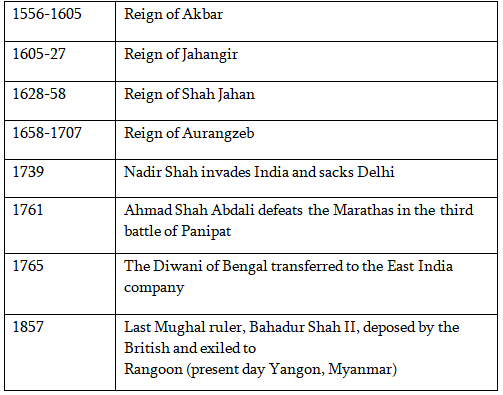CGPSE Prelims Paper 1 Mock Test - 6 - CGPSC (Chhattisgarh) MCQ
30 Questions MCQ Test - CGPSE Prelims Paper 1 Mock Test - 6
Consider the following statements regarding ancient India:
1. The word India comes from the Indus, called Sindhu in Sanskrit.
2. The name Bharata was used for a group of people who lived in the northwest, and who are mentioned in the Rigveda.
Which of the statements given above is/are NOT correct?
What is the primary objective of the ‘Lon Varratu’ campaign launched in Chhattisgarh?
Which tribal community is facing a cultural crisis due to raids on their traditional practices concerning Mahua liquor?
What significant role does the Jaitkham play in the Satnami community?
What does the GPS tracking system implemented by CGMSCL aim to improve?
The NITI Aayog emphasizes which approach to governance?
Which mineral resource is highlighted as an economic opportunity in the vision for a ‘Viksit Chhattisgarh’?
The Koya tribe primarily resides in which geographical regions of India?
What is the significance of the Mahua tree for the Koya community?
What sparked the violent protests by the Satnami community in Chhattisgarh?
What is the main function of the Team India Hub within NITI Aayog?
Which festival is celebrated by the Koya tribe to appease Hill deities?
What is the primary aim of the ‘Viksit Bharat’ initiative?
What is the main component of the GPS system used for tracking in Chhattisgarh's medicine delivery?
Consider The following statements regarding the ‘Imperial Cholas’:
1. Vijayalaya Chola captured the Kaveri delta from Mutharaiyar and built the town of Thanjavur.
2. Rajaraja Iled an expedition to theGangavalley.
3. Rajendra Developed The Navy For expeditions to Sri Lanka and Southeast Asiancountries.
Which of the statements given above is/are Correct?
Which of the following style/school of painting uses gold leaf and gemstones and are mostly created on glass and board?
With reference to the Medieval Indian history, which one among the following events happened earliest?
Which of the following were the major political centres of the Mauryan empire?
1. Tosali
2. Ujjaiyini
3. Manyakhet
4. Taxila
5. Survanagiri
Select the correct answer using the code given below:
The techniques of ‘tessellation’ and ‘pietra dura’ were used in which of the following types of architecture?
Consider the following pairs :
Copper plates - King associated
1. Karantai Copper plates - Rajendra Chola I
2. Kuram copper plates - Nandivarman III
3. Velurpalayam copper plates - Parameshwaravarman
Which of the pairs given above is/are correctly matched ?
Maharaja Sawai Jai Singh II of Amber was a great patron of astronomy. In this context, in which of the following places he built astronomical observatories (Jantar Mantar)?
1. Delhi
2. Jaipur
3. Varanasi
4. Ujjain
5. Mathura
Select the correct answer using the code given below.
Consider the following statements about Vallabhacharya:
1. His philosophy is known as Shuddha Advaita.
2. He propounded the Pustimarga.
3. He was instrumental in establishing
the Srinathji Temple at Nathdwara in Rajasthan.
Which of the statements given above are correct?
Consider the following statements:
1. Mughal court chroniclers wrote inTurkishas it was their mother tongue.
2. Mughals were Chaghtai Turks by origin.
Which of the statements given above is/are Correct?
Arrange the following incidents in chronological order:
British Government passes Limitation Law
Santhal Rebellion
Report by Deccan Riots Commission
First revenue settlement is Deccan
Select the correct answer using the code given below:
The first cotton textile mill in British India, was set up in:
With reference to the Charter Act of 1833, which of the following statements is/are correct?
All restrictions on European immigration and acquisition of property in India were lifted.
A law member was added to the governor-eneral’s council.
The administration was urged to take steps to improve the conditions of the slaves.
Select the correct answer using the code given below:
Which of the following statements are correct with respect to August Offer?
It explicitly offered dominion status for India.
A constituent assembly to be set up after the war where Indians would decide the Constitution.
It provided for the majority of Indians in expanded Viceroy’s executive council.
Select the correct answer using the code given below.
Consider the following statements with reference to the Rowlatt Act Satyagraha :
1. It was completely a non-violent satyagraha throughout India.
2. The Satyagraha Sabha concentrated mainly on publishing propaganda literature and collecting signatures on the Satyagraha pledge.
3. In Ahmedabad, the government enforced martial law.
Which of the statements given above is/are correct ?
With reference to the Treaty of Amritsar (1809), consider the following statements:
1. It was signed between Maharaja Ranjit Singh of Punjab and the British East India Company.
2. The treaty demarcated the river Sutlej as the boundary between the British and the state of Punjab.
3. The state of Punjab was forced to accept a permanent British resident at the royal court of Punjab.
Which of the statements given above is/are correct?
In the context of colonial history of Bengal and Bihar, the term 'Chatuspathi or Tol' referred to















